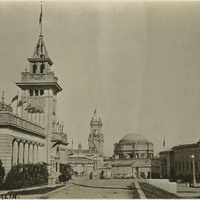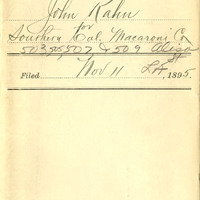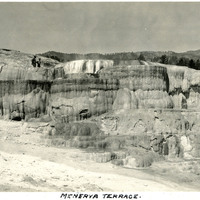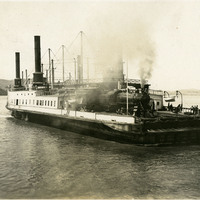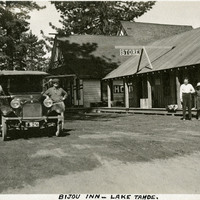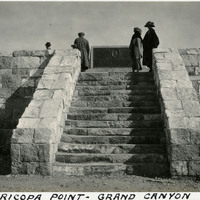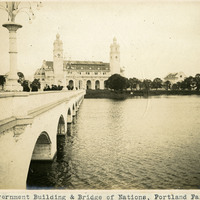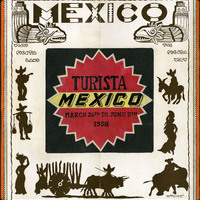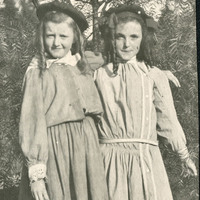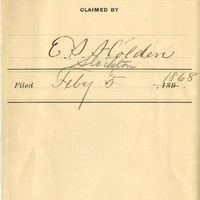Search All Items
- Filters:
- Type
- Still Image 4044
- Image 3895
- Text 436
- Text 50
- Image of the California Census from the records of the office of the California Secretary of State 1
- Language
- English 7937
- Spanish 494
- ENGLISH 4
- English 2
- census_013 1
- contra_costa_schedule_1_volume_1 1
Search Results 2771 to 2780 of 8533
-
Caption: "Australia," shows the Australian Pavilion at the Panama-Pacific International Exposition. See also 96-07-08-alb01-137.
Date: 1915
-
Caption: "Menerva [sic] Terrace," c. 1923. A prominent feature of the Mammoth Hot springs, the Minerva Terrace is a series of travertine terraces, formed from limestone. In this photograph, two unidentified men stand at the upper left, viewing the terrace.
Date: 1923
-
No Caption: A view of the ferryboat, Solano, in Contra Costa County, California, c. 1906.
Date: 1906
-
Caption: "Bijou Inn -- Lake Tahoe.," c. 1915-1920. William and Grace McCarthy standing next to automobile near Bijou Inn and store in the Lake Tahoe area.
Date: 1920
-
Caption: "Maricopa Point - Grand Canyon of Arizona," c. 1925. Erroneously labeled, this photograph shows Grace McCarthy standing at the Powell Memorial on Powell Point, rather than Maricopa Point. The granite Powell Memorial commemorates John Wesley Powell, who explored the Colorado River in 1869 and 1872. The 1869 expedition included the first known descent of a person of European ancestry into the Grand Canyon.
Date: 1925
-
Caption: "Government Building & Bridge of Nations, Portland Fair." Shows the Government Building, Guild's Lake, and the Bridge of Nations, a long pedestrian bridge over the lake. Some of the more than 100,000 light bulbs used to outline the exposition's buildings can be seen along the arches and decorative molding of the bridge. The Lewis and Clark Centennial Exposition was held in Portland, Oregon from June 1st to October 15th, 1905. It celebrated the one-hundred year anniversary of the exploratory expedition of the Louisiana Purchase and what became the northwestern part of the United States, led by Meriwether Lewis and William Clark. Some 1.6 million people visited the fair, viewing exhibits from twenty-one countries. See also 96-07-08-alb05-206.
Date: 1905
-
Caption: "Turista - Mexico - March 26th to June 8th, 1938," handwritten on a Mexico tourist brochure indicating the McCarthys' trip to Mexico in 1938. The brochure itself reads: Mexico - Visit Fiesta Land the Fiesta Way."
Date: 1938
-
Caption: "Want to go home," c. 1906, shows two unidentified young girls posing for a photograph.
Date: 1906


